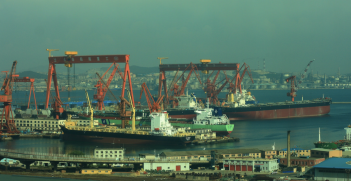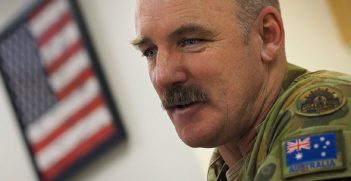What Do Morrison’s Changes to The APS Mean for Public Servants And Policy?

The merging of government departments was to “streamline bureaucracy.” However, issues such as cultural differences, logistical incompatibility, and isolated “silo” branches make this reorganisation a highly complex operation with little chance of success.
On 5 December 2019, Prime Minister Morrison announced sweeping changes to the structure of the Australian Public Service. Referred to as “machinery of government changes” (MOGs), it is common practice for Prime Ministers to do some level of rearranging of departments and functions in line with the priorities of their government. Such changes are usually accompanied with a detailed explanation of policy priorities and plans.
Morrison’s changes are different on the last point, with reducing bureaucratic congestion, silos, and lack of collaboration the only concerns raised. He also claimed that the changes will improve decision-making and result in improved service delivery, but with no detail regarding how this is supposed to happen. Yet, our research on MOGs has revealed that these structural rearrangements rarely decrease congestion and, in the short-term, often increase it due to the scale of upheaval involved in moving, restructuring and rebranding government departments. We found that even three years after a MOG, not only did blockages still exist – new ones had been created, as people sometimes had to find workarounds to dysfunctional structures that emerged out of new arrangements. Moreover, silos are a perennial problem in any large institution or bureaucracy; they are a product of differentiated organisational structures and, as a result, are unavoidable. We have found that silos exist just as much within MOG’d departments as between departments.
In our research we have found that structural solutions are often ineffective for breaking down silos, whilst common purpose is an important catalyst for collaboration. A common purpose is the shared understanding of what a department stands for and why it exists. It is a higher-order goal that sits above functions, acting as a binding force that brings functions together in a mutually beneficial way and focuses their attention towards the purpose. It is important for providing clarity regarding why functions co-exist and why they need to work together to achieve the outcomes and outputs of a department. This means that when disparate functions are merged together, and it is unclear why they should co-exist within the one department (aside from political reasons), then it can be incredibly difficult for them to break down silos and collaborate. If anything, silos can be accentuated, and bureaucratic politics can exacerbate existing issues.
Another challenge with MOGs is the different organisational cultures evident across the merged units: when cultures are fundamentally different, this can lead to cultural clashes, miscommunication, and conflict. Therefore, the very act of initiating a MOG can actually be significantly disruptive and result in perverse consequences. This is especially the case where you are creating “mega” departments, which are simply too large to operate as a unified whole. In these contexts, it is unlikely that a common purpose can be established to integrate the disparate functions. What often happens instead is that pre-existing silos continue to operate as such. Merged units can often continue to operate in isolation or, when staff from different functions are required to work together, cultural differences can be a huge impediment to coordination and collaboration. The angst and additional work associated with the MOG could also impede the morale, engagement, and productivity of those affected.
With the Morrison-initiated changes, many of the new departments created are very large, and therefore likely to face these types of challenges. This may mean that the very thing Morrison is setting out to achieve through initiating these highly disruptive changes – reduced bureaucratic congestion and improved collaboration – are not realised in practice and potentially worsened.
While the prime minister did not announce clear policy rationales for the changes, we can still read much into the mergers and changes of specific departments. Most notable, in terms of signalling priorities to the international community, is the shift-subsuming of the environment functions into the Department of Agriculture, Water, and the Environment. This suggests that the environment is not a policy department in its own right (i.e. a stand-alone department that, for example, has a goal of environmental sustainability or addressing climate change), but rather is in service of agriculture. It also poses potential risks with combining these functions due to vested interests and competing policy priorities. In addition, the energy function (previously a part of the Department of Environment and Energy) has been moved into the Department of Industry, Science, Energy and Resources. This merger will need to be managed carefully to ensure that the interests of industry stakeholders don’t overpower those of energy stakeholders. Combined, these changes could further inflame tensions around Australia’s emissions, which have been criticised for failing to meet global targets.
Nationally, the shift of Human Services (now Services Australia) into the Department of Social Services is potentially problematic. Both departments have a very large remit and joining them together is likely to create a cumbersome structure that is difficult to manage. It also leaves a single set of executives presiding over some of our biggest policy implementation challenges; for example, the National Disability Insurance Scheme and the robo-debt response. The apparent devaluation of the arts function is also concerning, with this function subsumed into a large remit of seemingly unrelated functions in the new Department of Infrastructure, Transport, Regional Development, and Communications.
For many of the announced MOGs, the merged functions are fundamentally different in their organisational cultures, which are likely to present challenges with bringing them together in an integrated way that achieved supposed gains. It would be wise to learn from previous MOGs where cultural differences have been problematic for establishing an integrated department; the Department of Prime Minister and Cabinet/ Indigenous Affairs comes to mind, as does the previous Department of Education, Employment and Workplace Relations. Another consideration is that different departments run on different IT and other systems to administer their functions. In some instances, the systems have to be rebuilt within a new department which is slow and incredibly costly.
Ultimately, the changes initiated by Morrison are unlikely to meet his stated goals of a more streamlined bureaucracy. This is because structural solutions are rarely the answer to inefficiencies; there is no optimal or ideal structure that will resolve perennial issues such as silos, cultural differences, or a lack of common purpose.
Associate Professor Gemma Carey is the Research Director of the Centre for Social Impact UNSW, where she leads a multi-disciplinary team of researchers committed to addressing inequality.
Dr Fiona Buick is a researcher at the Public Service Research Group, UNSW. Fiona’s research focus is on organisational culture, strategic human resource management and human resource management within the public sector.
This article is published under a Creative Commons Licence and may be republished with attribution.





